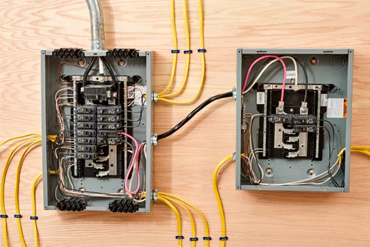Understanding Electrical Work Feeders and Sub-Feeders
Electrical systems are intricate networks of wires, circuits, and components that deliver power to various points within a building or facility. Central to these systems are feeders and sub-feeders, critical elements that ensure a reliable and efficient distribution of electricity.
What is an Electrical Feeder?
A feeder is a primary electrical circuit that distributes power from the main electrical service panel to various branches or sub-feeders within a building. It acts as a “main artery” within the electrical system, carrying a significant load of electricity to serve different areas or functions. Feeders are typically protected by circuit breakers and serve as the backbone of the electrical infrastructure.
Key Features of Feeders
- High Capacity: Feeders have a higher current-carrying capacity than branch circuits, allowing them to deliver power to multiple circuits or areas.
- Protection: They are equipped with overcurrent protection devices to safeguard against electrical faults and overloads.
- Main Disconnect: Feeders are usually connected to the main disconnect switch or breaker in the electrical panel.
What is a Sub-Feeder?
A sub-feeder, as the name suggests, is a secondary branch circuit that extends from the feeder to supply power to a specific area, load, or group of electrical devices. Sub-feeders are essential for further subdividing and distributing power within a building, ensuring that electricity reaches its intended destinations efficiently.
Key Features of Sub-Feeders
- Targeted Distribution: Sub-feeders allow for precise and controlled power distribution to specific sections of a building, such as lighting systems, HVAC units, or industrial machinery.
- Branch Circuit Protection: Sub-feeders are equipped with their own circuit breakers or fuses to protect individual circuits.
- Flexibility: They provide flexibility in managing electrical loads, making it easier to isolate and troubleshoot issues.
The Role of Feeders and Sub-Feeders
- Balanced Load Distribution: Feeders and sub-feeders help evenly distribute electrical loads, preventing overloading of circuits and ensuring the efficient use of electricity.
- Zoning: They enable the zoning of electrical systems, allowing for better control and management of power distribution in different areas.
- Redundancy: In commercial and industrial settings, redundancy in feeders and sub-feeders is often employed to ensure continuity of power in the event of a fault or maintenance.
- Scalability: They make it easier to expand or modify electrical systems to accommodate changing power requirements.
- Safety: Properly designed and maintained feeders and sub-feeders enhance the safety of an electrical system by minimizing the risk of overloads and electrical faults.
Understanding the roles and functions of feeders and sub-feeders is crucial for designing and maintaining safe and efficient electrical systems. Proper installation, sizing, and protection of these components are essential for the reliable and continuous supply of electricity to meet the demands of residential, commercial, and industrial applications.

